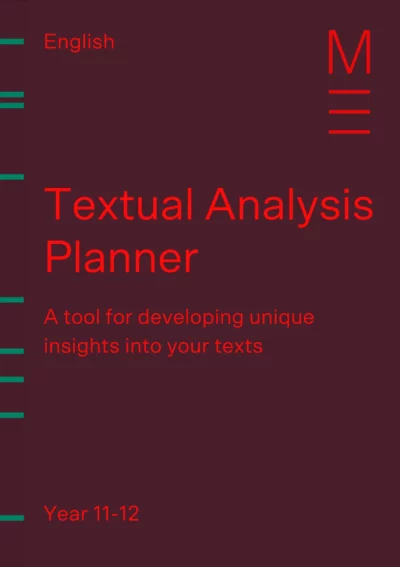Welcome to Matrix Education
To ensure we are showing you the most relevant content, please select your location below.
Select a year to see courses
Learn online or on-campus during the term or school holidays
Learn online or on-campus during the term or school holidays
Learn online or on-campus during the term or school holidays
Learn online or on-campus during the term or school holidays
Learn online or on-campus during the term or school holidays
Learn online or on-campus during the term or school holidays
Learn online or on-campus during the term or school holidays
Get HSC Trial exam ready in just a week
Get HSC exam ready in just a week
Select a year to see available courses
Science guides to help you get ahead
Science guides to help you get ahead
In this article, we take the mystery out of in medias res. We explain what it means to start in the middle of things, how it develops meaning, and how to write about it in your responses.

Guide Chapters
Join 75,893 students who already have a head start.
"*" indicates required fields
You might also like
Related courses

Join 8000+ students each term who already have a head start on their school academic journey.
In the middle of things! It can be disorienting when narratives don’t start at the beginning, but it can be a powerful storytelling device, too. In this article, we’re going to discuss the in medias res and explain how it develops meaning in texts.
Want to know the key to sophisticated analysis?

Level up how you analyse texts and take notes with expert strategies and templates!

Fill out your details below to get this resource emailed to you.
"*" indicates required fields
Within a student’s journey through high school English, there is a very good chance they will come across a book, short story, poem or film that appears to begin in the midst of the action. Rather than building up the beginning of the plot with the common who, what, where, when structure, some composers will seek to throw their audiences into the middle of the story. This structural device is referred to as beginning as work in medias res!
It is very important that students are able to identify when works are beginning in medias res, as this technique can be useful in explaining the ways in which plotlines are structured, and proving the existence of important themes within the text!
In Medias Res is Latin for “into the midst of things.” In using this device, composers will drop their reader literally into the middle of a plotline. Traditionally, most stories begin ab ovo (from the beginning), though some stories may even start in ultimas res (at the end of a story)!
This essentially deprives the reader of knowing the situation completely, and forces them to rely on dialogue, flashbacks and connotations to gather a better understanding of what is going on.
It is easy for students to forget the importance of context in defining an experience; a death, marriage or accident can feel simple, normalised, until the events surrounding them are revealed.
Composers who begin their stories in medias res purposefully hide information from the reader, allowing them to reveal it later in a more evocative way. The reader may subconsciously attempt to “fill in the blanks” themselves and assume certain elements of the story. However, this assumption is often incorrect, allowing for readers to question why they presupposed certain elements of the story.
As we’ve seen, a story will be said to begin in medias res where it starts in the middle of the action. Here’s some examples of how students can identify a story beginning in medias res:

An example of this can be seen In China Mieville’s The Census-Taker. The opening narration of this novella begins as follows:
“A boy ran down a hill path screaming. The boy was I. He held his hands up and out in front of him as if he’d dipped them in paint and was coming to make a picture, to press them down to paper, but all there was on him was dirt. There was no blood on his palms…’Look!’ I heard a man say. ‘God, look at him!’. I kept up the hands I thought were bloody for them to see. I shouted, ‘My mother killed my father!’”.
Here, Mieville crafts an astonishingly suspenseful atmosphere right from the beginning of his text.
By thrusting the reader into a situation they do not yet know anything about, he sets their expectations up to be twisted, and shocked, as they continue reading.
In the absence of context, this opening narration appears rather odd. Though, if an individual were to finish the entire story, and then come back to read this opening again, it would appear entirely different.
Mission Impossible III (2006) opens on the film’s protagonist, Ethan Hunt, who is being held hostage, and at gunpoint, by a man named Owen Davian. The dialogue between the two characters is as follows:
Davian: We’ve put an explosive charge in your head. Does that sound familiar? The Rabbit’s Foot. Where is it?
Ethan: I gave it to you.
Davian: Ethan, where’s the Rabbit’s Foot?
Ethan: Wait… What are you saying? That wasn’t it? – What I gave you, was that…
Davian: I’m going to count to 10. You’re going to tell me where the Rabbit’s Foot is or she dies.
Director J.J Abrams, like Mieville, wastes no time building up a tense atmosphere with this scene. The audience is not shown how Ethan was captured, when or where. Rather, the film places the viewer right in the midst of the true action from the beginning, forcing them to focus on the information revealed during the interrogation that also functions to establish and foreshadow later plot details.

Shakespeare’s final play The Tempest does not begin with Prospero’s history as the Duke of Milan. Instead, Shakespeare starts the play in the middle of a great, chaotic storm. The opening lines are as follows:
SCENE I. On a ship at sea: a tempestuous noise
of thunder and lightning heard.
Enter a Master and a Boatswain
Master: Boatswain!
Boatswain: Here, master: what cheer?
Master: Good, speak to the mariners: fall to’t, yarely,
or we run ourselves aground: bestir, bestir.
In beginning his play in the midst of a confusing, stressful situation, Shakespeare ensures that the audience’s own confusion as to what is truly happening mirrors that of the characters. It is not until the second scene that Shakespeare reveals that Prospero had, in fact, conjured the storm to enact his own revenge.
Now that we understand what beginning in medias res means, and how it can be identified in texts, let’s go step-by-step and see how we can analyse it as a technique within our essays!
In order to determine whether a text is beginning in medias res, it is important to ask yourself whether the story is truly moving from the middle forward. If past events are mentioned by other characters, brought back through flashbacks, or discussed in passing narration, this is a good indication that the composer intended for the story to begin in medias res!
It is extremely useful to consider how the situation is being portrayed by the composer from the beginning, as this representation will likely be subject to change as the story progresses, and more information is revealed.
Take Shakespeare’s Hamlet as an example; the death of Hamlet’s father occurs before the play begins.
Initially, his death is represented as tragic, and Hamlet is enraged at his uncle Claudius for so quickly marrying his mother, but we don’t initially suspect that Claudius is the murderer. It is only after Hamlet sees his father’s ghost a few scenes later that the death appears more sinister, and this thus changes the stakes of Hamlet’s current situation too:
“List, list, O, list! / If thou didst ever thy dear father love…Revenge his foul and most unnatural murder.”
Does starting the story in medias res make the responder confused? Stressed? Sad? Does withholding information or context from the reader cause the reveals to occur more evocatively later? Or, does forcing the reader to assume elements of the plot before specifying them in the story cause the responder to question their own judgments and biases?
You need to assess what your emotional response to the use of the device is.
T.E.E.L stands for:
Let’s use this structure to analyse the opening of China Mieville’s The Census-Taker, supposing that it is used to prove the theme of suspicion, or mistrust:
| The opening lines of China Mieville’s novella The Census-Taker begins the story in medias res, forcing the reader into a tense, suspenseful atmosphere and situation of which they know little about. In “A boy ran down a hill path screaming. The boy was I. He held his hands up and out in front of him as if he’d dipped them in paint and was coming to make a picture, to press them down to paper, but all there was on him was dirt. There was no blood on his palms…’Look!’ I heard a man say. ‘God, look at him!’. I kept up the hands I thought were bloody for them to see. I shouted, ‘My mother killed my father!’”, the reader immediately questions the facts presented to them. Yet, they are nonetheless forced into accepting the depiction given by Mieville’s protagonist. In structuring the story this way, the suspicion the boy has regarding his parents’ true natures are superimposed on the reader, who too must question these past events as more and more information is revealed. |
Learn how to analyse in medias res and more structural devices in your English responses with Matrix! We provide you with clear, structured lessons, resources and feedback to support your learning.
Start HSC English confidently
Expert teachers, detailed feedback, one-to-one help! Learn from home with Matrix+ Online English courses.
Written by Matrix Education
Matrix is Sydney's No.1 High School Tuition provider. Come read our blog regularly for study hacks, subject breakdowns, and all the other academic insights you need.© Matrix Education and www.matrix.edu.au, 2025. Unauthorised use and/or duplication of this material without express and written permission from this site’s author and/or owner is strictly prohibited. Excerpts and links may be used, provided that full and clear credit is given to Matrix Education and www.matrix.edu.au with appropriate and specific direction to the original content.